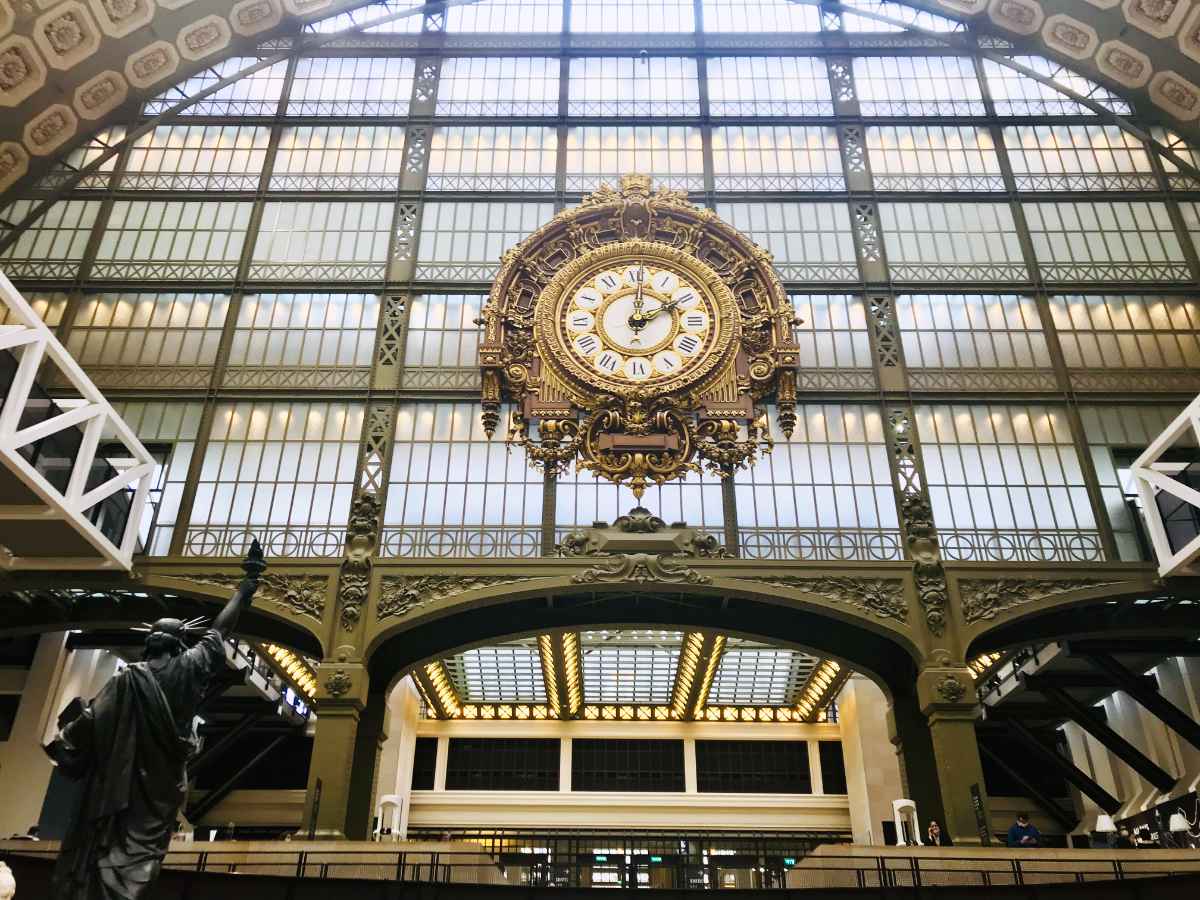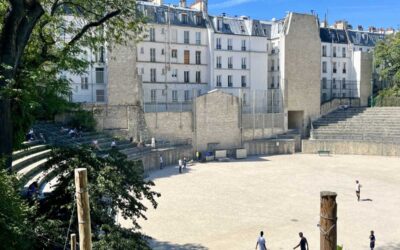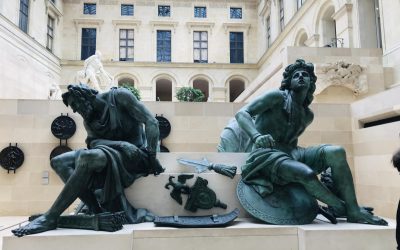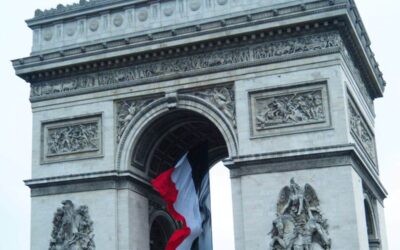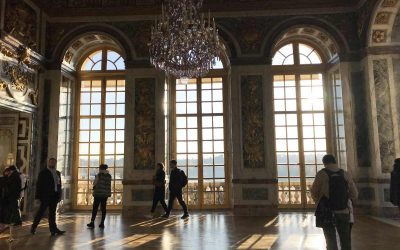The Musee d’Orsay in Paris, has got to be one of the finest museums in the world. Located on the left bank of the Seine River, this eminent museum houses a wonderful collection of French art and history.
As you can imagine, there is plenty to see in this vast museum, which extends over 5 floors, and a basement level that includes special exhibitions. So along with a brief history of the building, I’ve also narrowed it down a few highlights that you should not miss at Musée d’Orsay, so that you can make the most of your time. Allons-y!
- History
- Best exhibits and attractions
- 1. The Clock
- 2. 'Little Dancer aged 14' by Edgar Degas
- 3. 'Bal du Moulin de la Galette' by Auguste Renoir
- 4. 'Luncheon on the Grass' by Edouard Manet
- 5. 'Evening air' by Henri Edmond Cross
- 6. 'Rue Montorgueil in Paris' by Claude Monet
- 7. Self Portrait by Van Gogh
- 8. Arearea by Paul Gauguin
- 9. 'Origin of the World' by Gustave Courbet
- 10. 'Dance in the City' and 'Dance in the Country' by Auguste Renoir
- 11. 'Olympia' by Édouard Manet
- 12. 'Château des Papes' by Paul Signac
- 13. 'Poppy Field' by Claude Monet
- 14. 'Bedroom in Arles' by Vincent Van Gogh
- How long do you need at Musée d’Orsay?
- Is it worth visiting?
- Other museums nearby
History
In addition to having some of the finest paintings and sculptures in the world, the museum itself is also a work of art and historical landmark. It was originally designed as a railway station, Gare d’Orsay, and was finished in 1900 for the Exposition Universelle held in Paris that year.
However, by 1939 the station’s short platforms had become unsuitable for the longer trains. The station’s close proximity to the Seine River meant that no extensions or renovations were possible to accommodate longer trains.
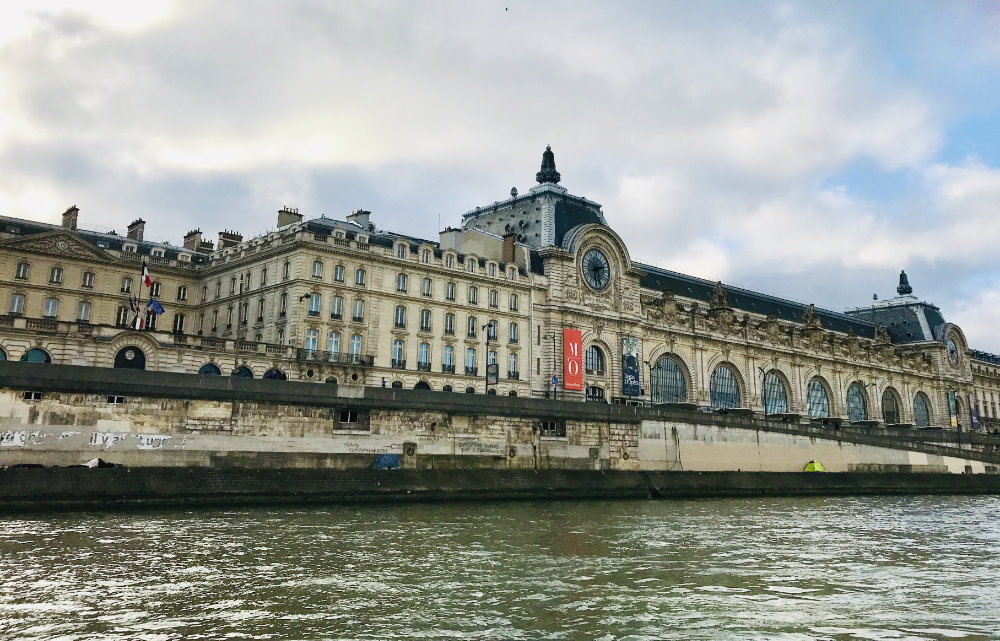
It continued to serve its purpose during WWII war, but more as a mailing center rather than transporting people However, in 1945 it was at Musée d’Orsay that a lot of liberated prisoners from the prison camps were welcomed home, as the largest French repatriation center.
In 1975, someone had the thought to tear it down and put up a hotel, but the French government quickly stepped in and decided it should be transformed into a museum. The new museum was inaugurated by French President François Mitterrand in 1986.
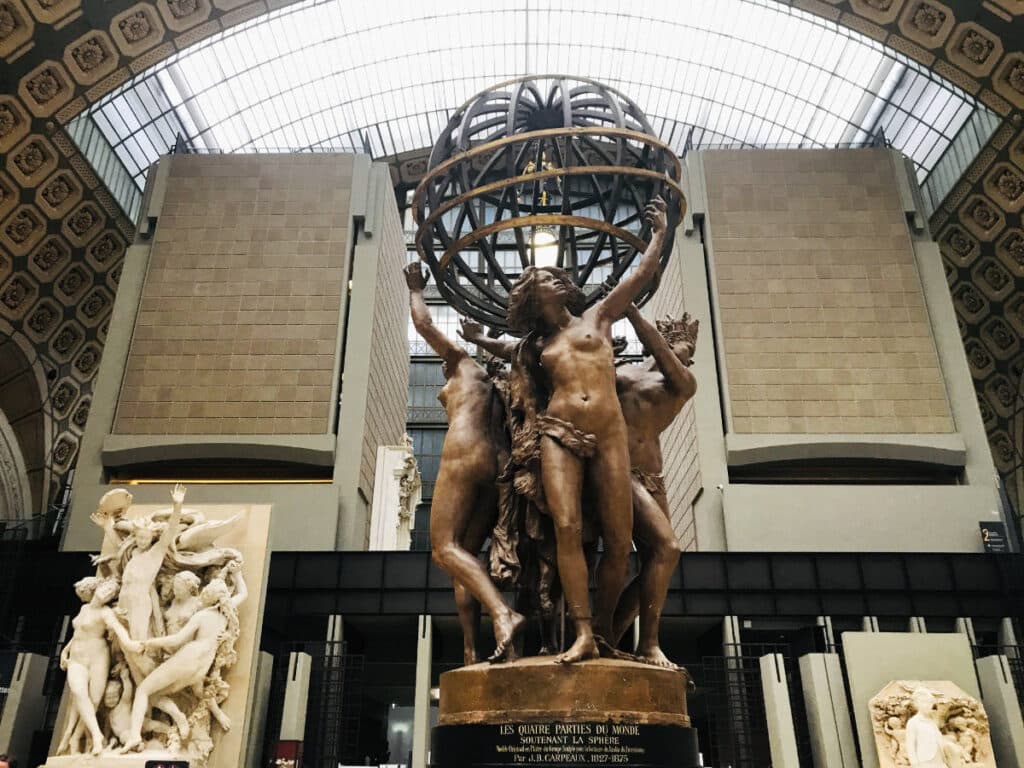
And ever since, tourists and locals alike have been flocking to see its over 3000 works of art. While the nearby Louvre Museum has a collection that is more vast (everything from antiquity to religious art), if you love Impressionist paintings, it is the Musée D’Orsay that you are looking for.
Best exhibits and attractions
1. The Clock
The one item that everyone instantly recognizes at the Musée d’Orsay has to be at the clock on the top floor, that looks out over the Seine.
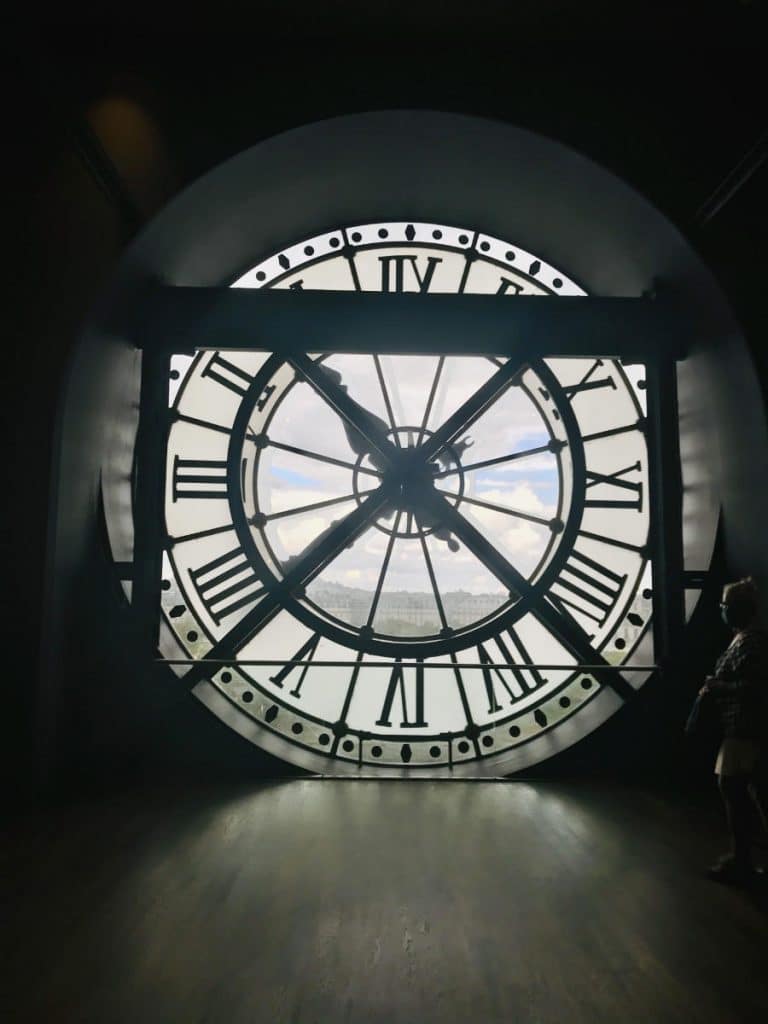
From here you can see the beautiful Hausmannian buildings that line the quais of the river, as well as Place the Concorde and the Musée du Louvre. It is an iconic sight that epitomizes Musée d’Orsay, and to a certain extent, Paris.
2. ‘Little Dancer aged 14’ by Edgar Degas
The sculpture titled “Petite danseuse de 14 ans” by Edgar Degas is based on a real person. Although 1/3 the size of a real person, it is based on a young student of the Paris Opera Ballet dance school, a Belgian girl named Marie van Goethem.
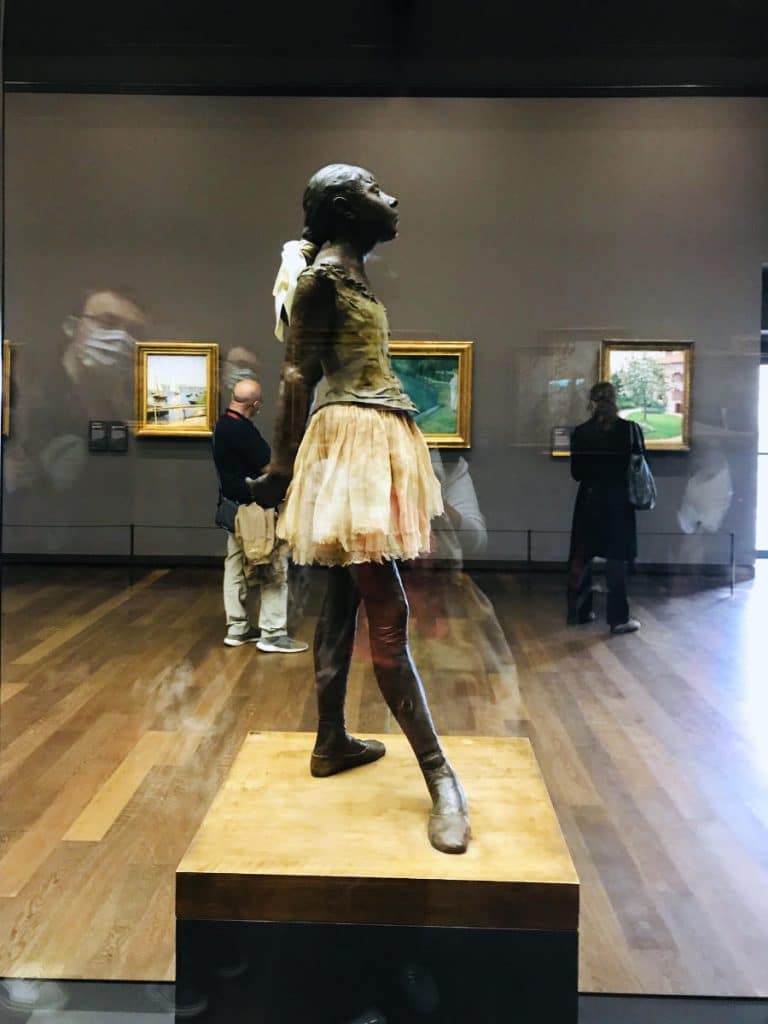
It is entirely sculpted in wax and is dressed in a real bodice, tutu and ballet slippers. In addition, when first exposed, it also has a wig of real hair.
Unlike most artwork featuring ballerinas show them as graceful and beautiful, this statue was intended to show not a prima ballerina, but one of “ballet rats” working in the corps de ballet without any of the glory and suffering in silence.
At the time, young ballet dancers were expected to give sexual favors to the male patrons who would go backstage and watch the girls practice. It is unclear what Degas’s relationship to her was exactly.
With the statue showing the nefarious side of ballet, it was considered “repulsive”, “ugly”, and “a threat to society“. In the year following the exhibition of the sculpture, Marie’s dance career ended at 15. No trace of what happened to her remains.
Degas would go on to much international acclaim, although in his later years he was accused of anti-Semitism and misanthropic behaviour.
3. ‘Bal du Moulin de la Galette’ by Auguste Renoir
The “Dance at Le moulin de la Galette” is a painting from 1876 by the famed Pierre-Auguste Renoir.
It is one of Impressionism’s most celebrated masterpieces and a smaller version of this painting which is in private hands, was sold for $78 million in 1990. One can only imagine what price this larger painting would fetch on the open market.
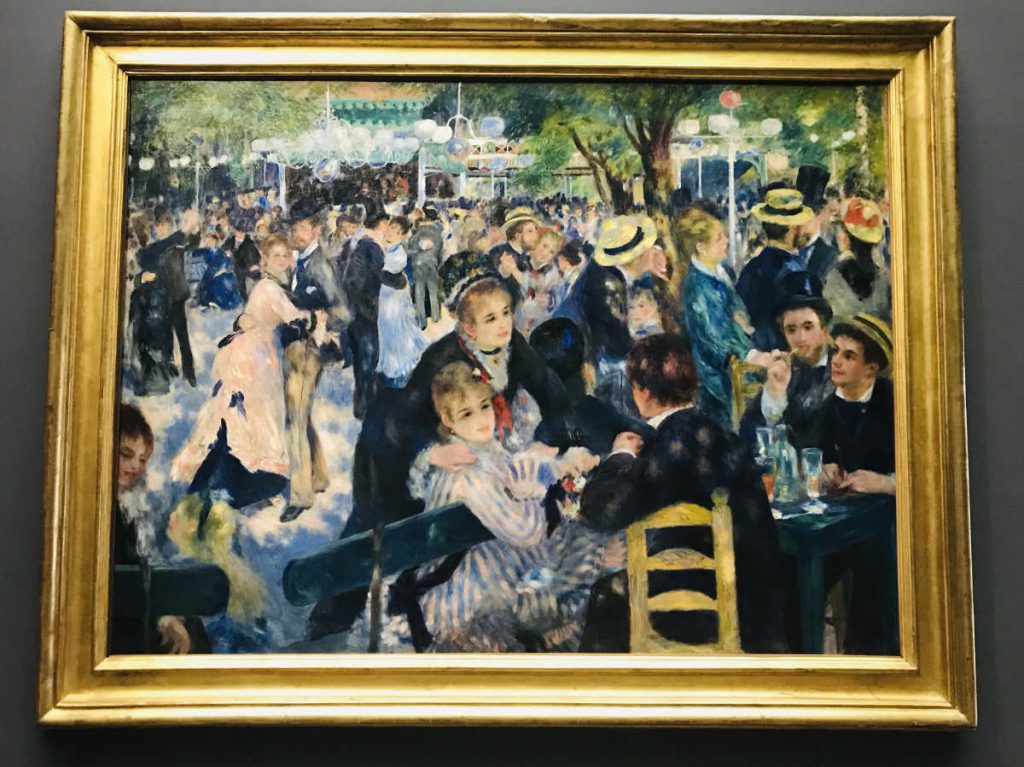
The painting depicts a typical Sunday afternoon at the original Moulin de la Galette in the district of Montmartre (18th arr.) in Paris. It is basically an outdoor bal or party, where Parisians would dress up with friends, dancing and drinking late into the evening. (You can still find bals populaires in Paris, which locals flock to.)
4. ‘Luncheon on the Grass’ by Edouard Manet
Painted in 1893, the “Le déjeuner sur l’herbe” by Edouard Manet is a large scale painting that measures 81.9 inches x 104 inches.
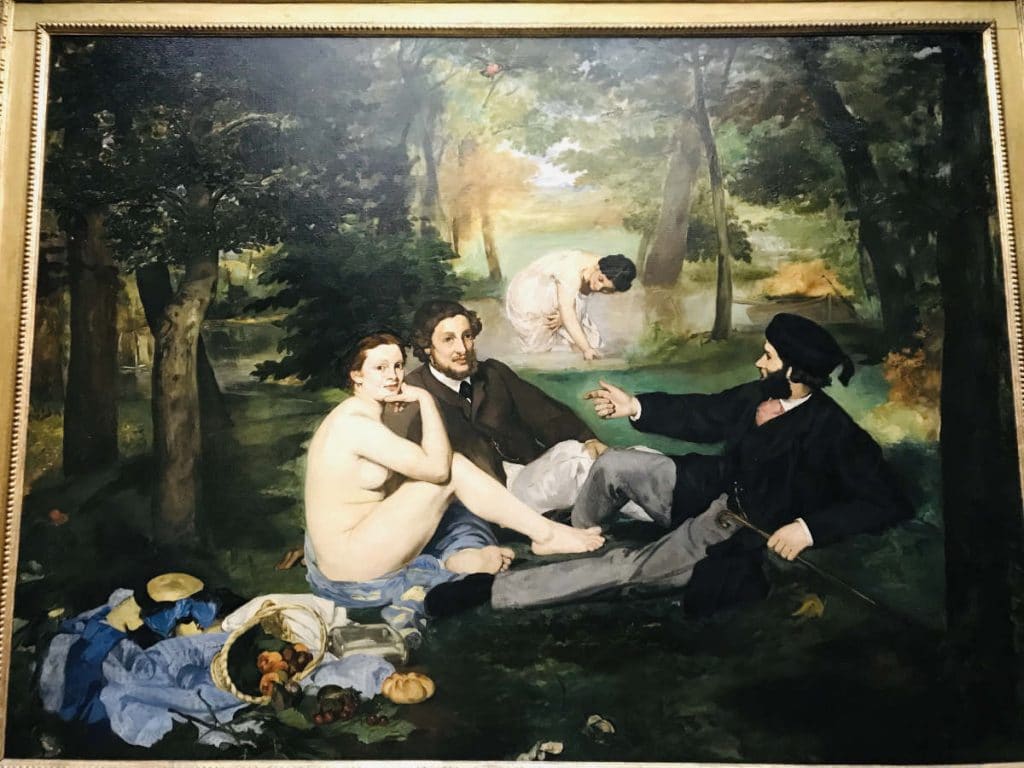
It depicts a nude female woman, sitting casually at a picnic with an assortment of food next to her, along with two fully dressed men. She is looking straight at the viewer while the two men seem to be in full discussion, ignoring her.
Edouard Manet was already a prominent figure in France when the painting was put on display, and this there were many negative reviews when it was first displayed. Even famous writer and philosopher Emile Zola commented on the “obscene intent” of the juxtaposition of this woman painted in white, while the men are in dark colors.
Inspired by this painting, many other famous contemporaries of Manet like Paul Cezanne, Claude Monet, James Tissot, Paul Gaugin and Pablo Picasso produced paintings of picnics with various levels of nudity.
5. ‘Evening air’ by Henri Edmond Cross
Painted in the same year, 1893, is Henri Edmond Cross’s “L’air du Soir”. The painting is in a neo-impressionist style using pointillism for a mosaic effect.
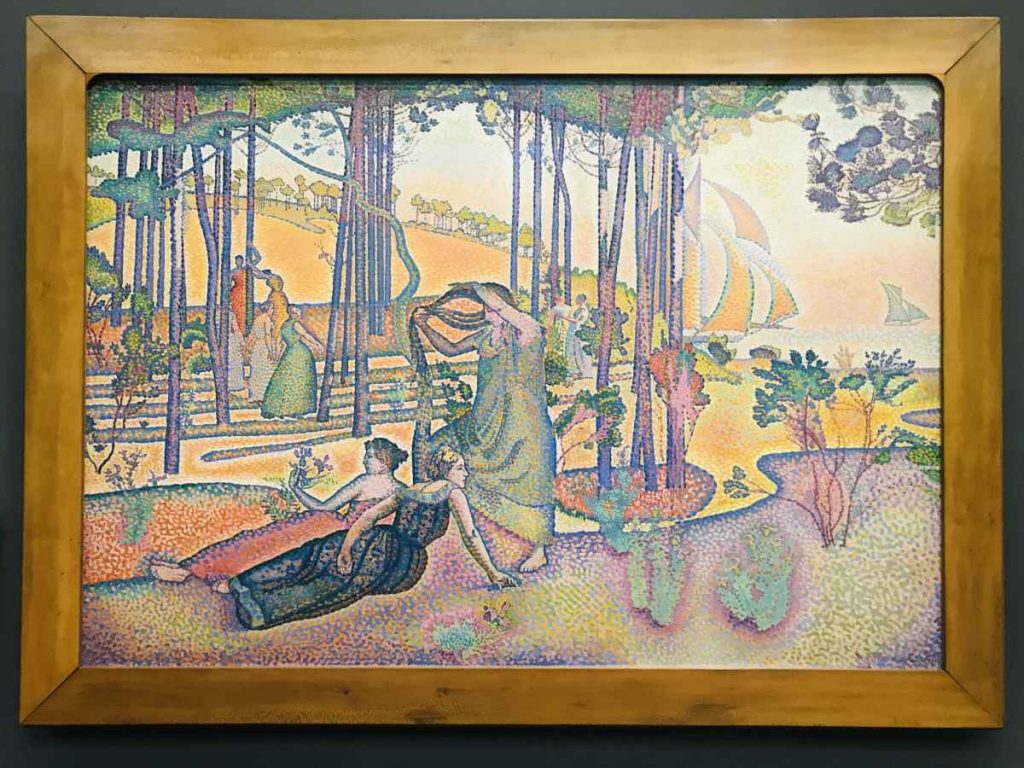
Cross painted several pieces of art in this style, becoming famous for their harmonious palettes of colors that are pleasing to the eye.
After exhibition at the Salon des Indépendants in 1894, the artwork was offered by the painter to Paul Signac, a contemporary of his whose artwork is also featured at Musée d’Orsay (see below).
Today, Cross’s artwork is featured in museums and galleries all across the world.
6. ‘Rue Montorgueil in Paris’ by Claude Monet
If you wander around central Paris today, you are bound to fall in love with the Rue Montorgueil in the 1st arrondissement. It is a lively pedestrianized road with plenty of small shops and cafés lining both sides of the street.
And it is clear that it made French artist Claude Monet fall in love with it as well.
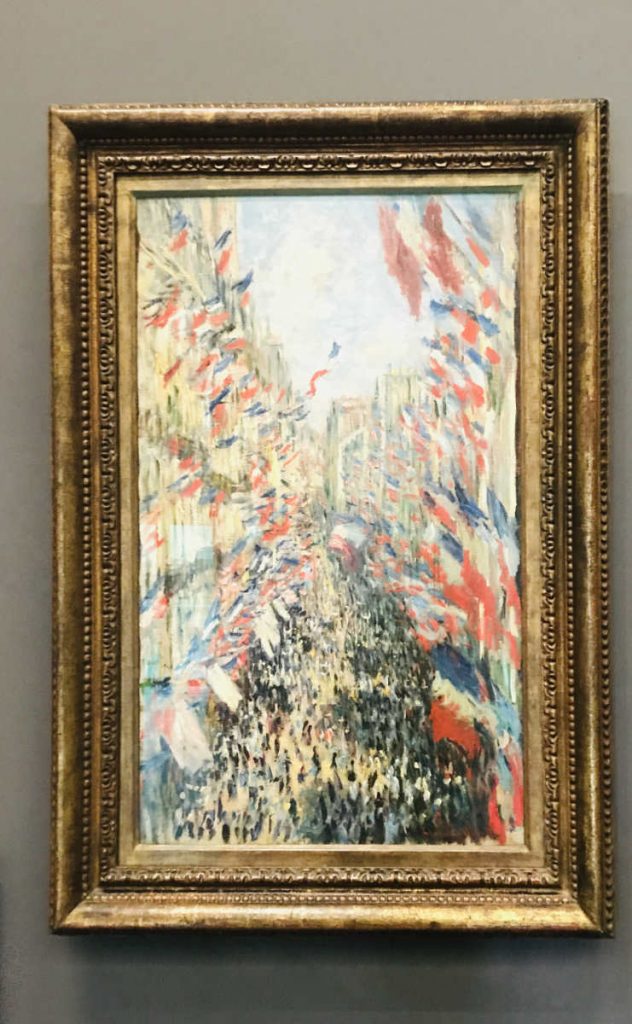
Painted in 1878, the waving French flags are not celebrating Bastille day. Rather it marks June 30 1878, on the occasion of the national holiday for “peace and work”.
This was a new holiday at the time, promoted by the French republican state after the humiliation of the defeat by Prussia in 1870.
7. Self Portrait by Van Gogh
Dutch painter Vincent van Gogh spent much of his life in France, specifically in Provence, and around Paris where his brother Theo lived with his family.
The self-portrait is believed to have been painted in 1889 in Arles or St. Remy de Provence where Van Gogh spent a couple of years in a mental institution after cutting off his own ear.
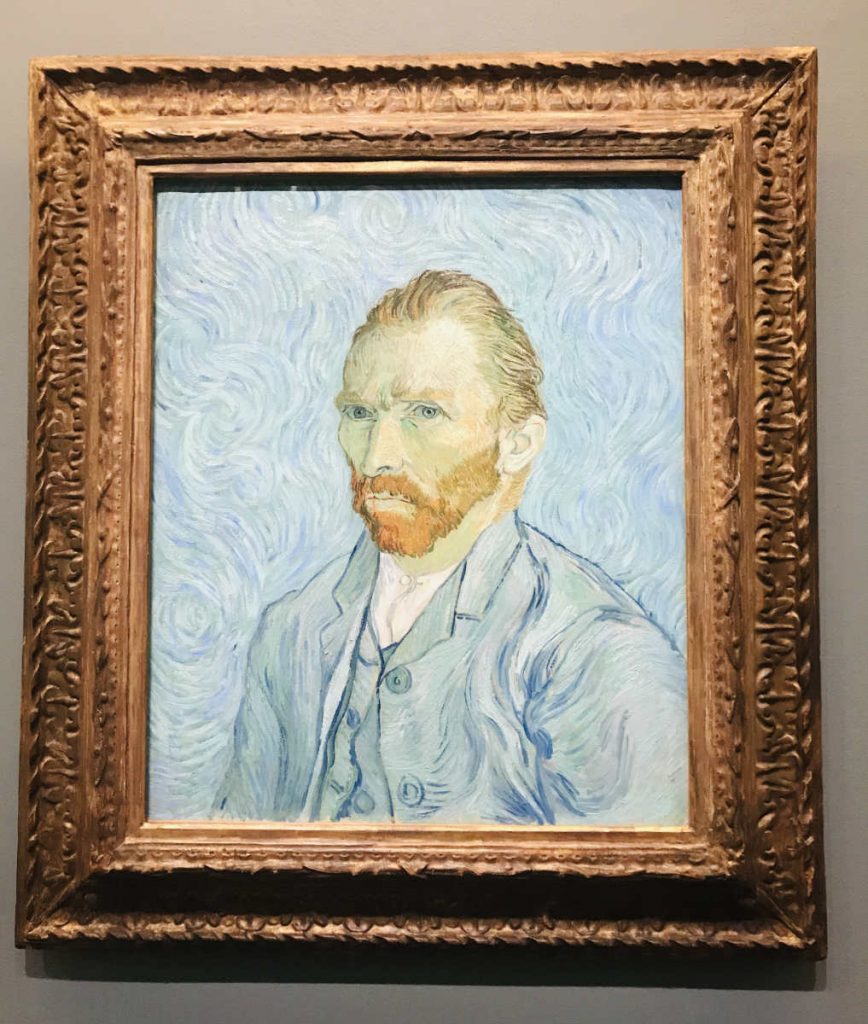
Even in his own self-portrait, his features are slightly anxious and stressed.
Van Gogh was known to indulge in absinthe, and the colors of the painting are a mix of absinth green and pale turquoise, offset by the strong orange beard.
8. Arearea by Paul Gauguin
Painted in 1892, Arearea is one of a collection of paintings featuring the island of Tahiti. Tahiti is an overseas territory of France and French Polynesia, and where Gaugin spent several years of his life.
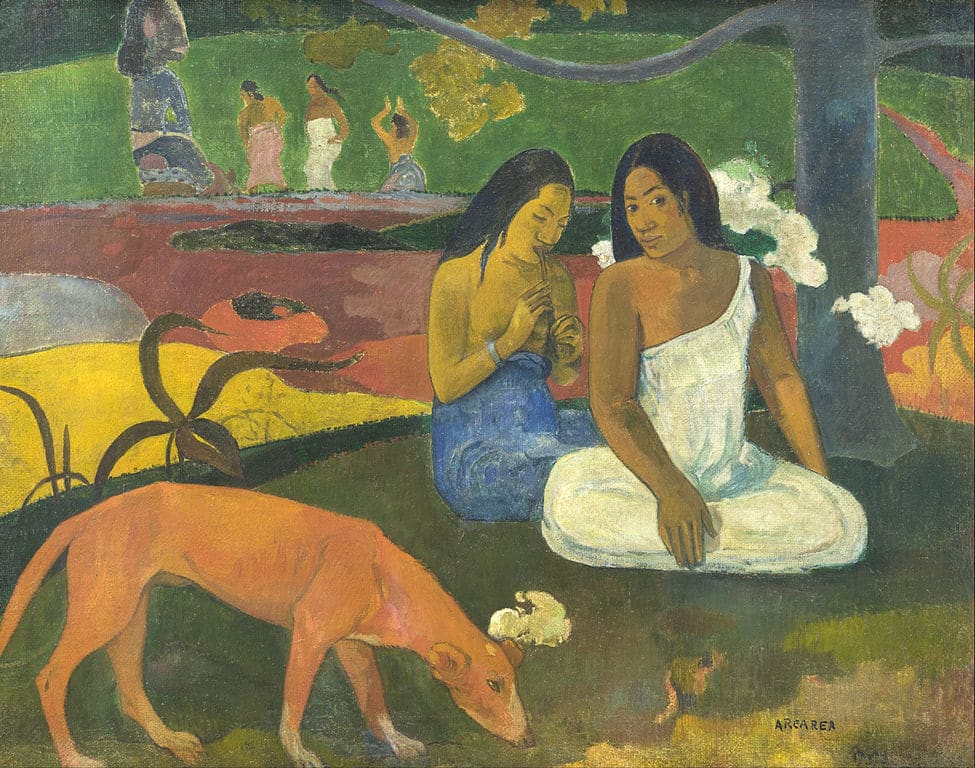
In the background, you can see three Tahitian women worshiping a large Maori statue, which actually stems from his own imagination as it is not based on any Tahitian ritual.
The painting was exhibited in Paris in November 1893, and received much criticism for the prominently large collarless dog in the foreground, which did not make sense to art critics.
9. ‘Origin of the World’ by Gustave Courbet
The “L’Origine du Monde” is a painting that has remained controversial ever since it was created in 1866. Painted by French artist Gustave Courbet, it is a close-up view of the nether region of a naked woman, lying on a bed with legs spread.
Unlike other paintings where the nudity is almost sterile and hairless, the graphic nature of this painting is always going to provoke a reaction. Since the painting is definitely rated NC-17, I have not included a photo of the painting but you can find one here.
10. ‘Dance in the City’ and ‘Dance in the Country’ by Auguste Renoir
“Danse à la ville” and “Danse à la campagne” are two paintings by Pierre-Auguste Renoir that were commissioned for a local French art dealer named Paul Durand-Ruel.
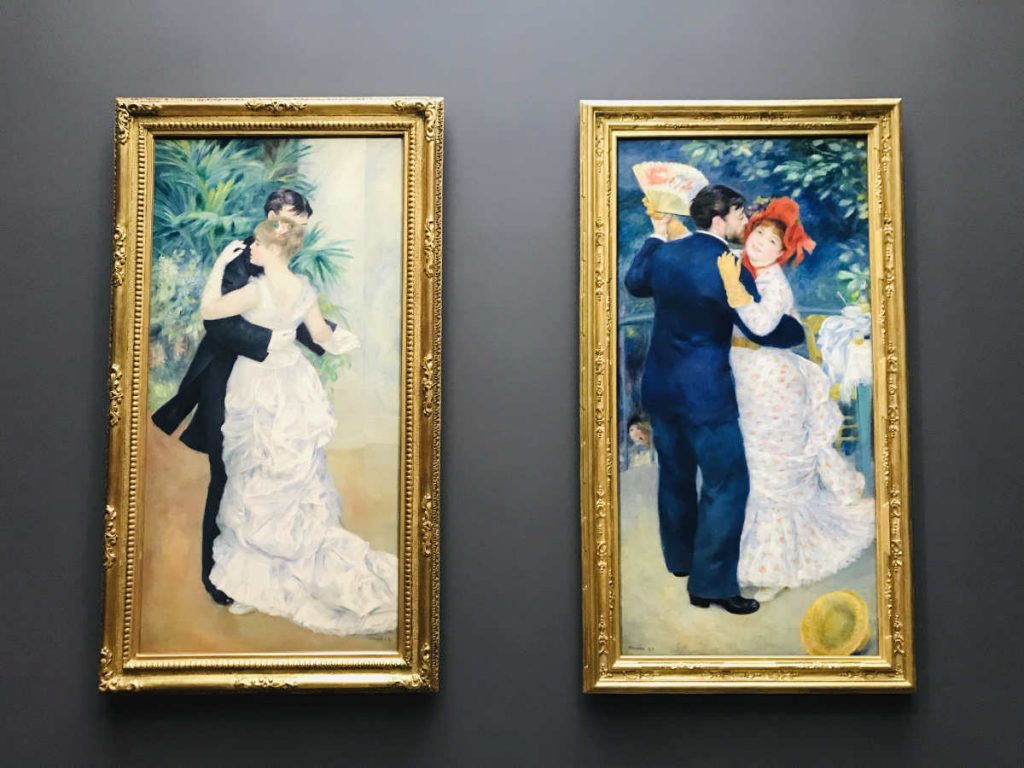
Some of the real-life characters in these paintings are the same as in the earlier painting Bal du Moulin de la Galette by Auguste Renoir. Interestingly, the model in the paintings is a renowned French female artist as well, Suzanne Valadon.
The pair of paintings actually are a part of a set that includes a 3rd painting, “Dance at Bougival” which is currently in the collection of the Museum of Fine Arts in Boston, Massachusetts, U.S.A.
The three paintings are meant to show the same dance as it occurs in three different parts of French society. There is the formal ball of the French bourgeoisie in Dance in the City, the country dance in Dance in the Country, and an even more informal outdoor party in Dance at Bougival.
11. ‘Olympia’ by Édouard Manet
Painted in 1863 by Édouard Manet, Olympia shows a nude woman reclining on a bed, with a fully-dressed black servant attending to her.
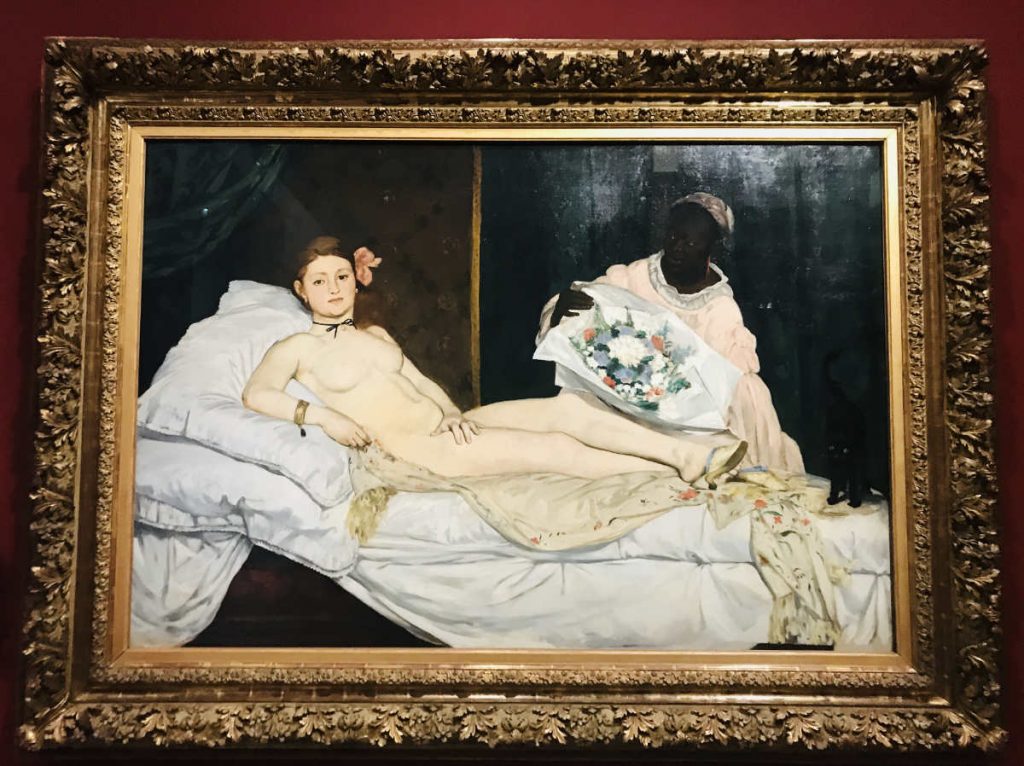
It was shocking even when it was first displayed, although not for the dichotomy of the two figures, but for the straight-forward gaze of the nude woman.
This confrontational look came with the assumption that the woman was a courtesan, as only they would allow themselves to be painted that way. In addition, “Olympia” was a name associated with escorts in 1860s Paris.
More recently, it is the representation of the black woman that has been questioned, including why she has been painted almost disappearing into the background.
For context, the painting “Olympia” was created 15 years after slavery had finally been abolished in France and its empire, but negative stereotypes persisted.
12. ‘Château des Papes’ by Paul Signac
Similar to the pointillism by fellow artists Georges Seurat and Henri-Edmond Cross, Paul Signac tackles the subject of the Château des Papes in Avignon in the south of France.
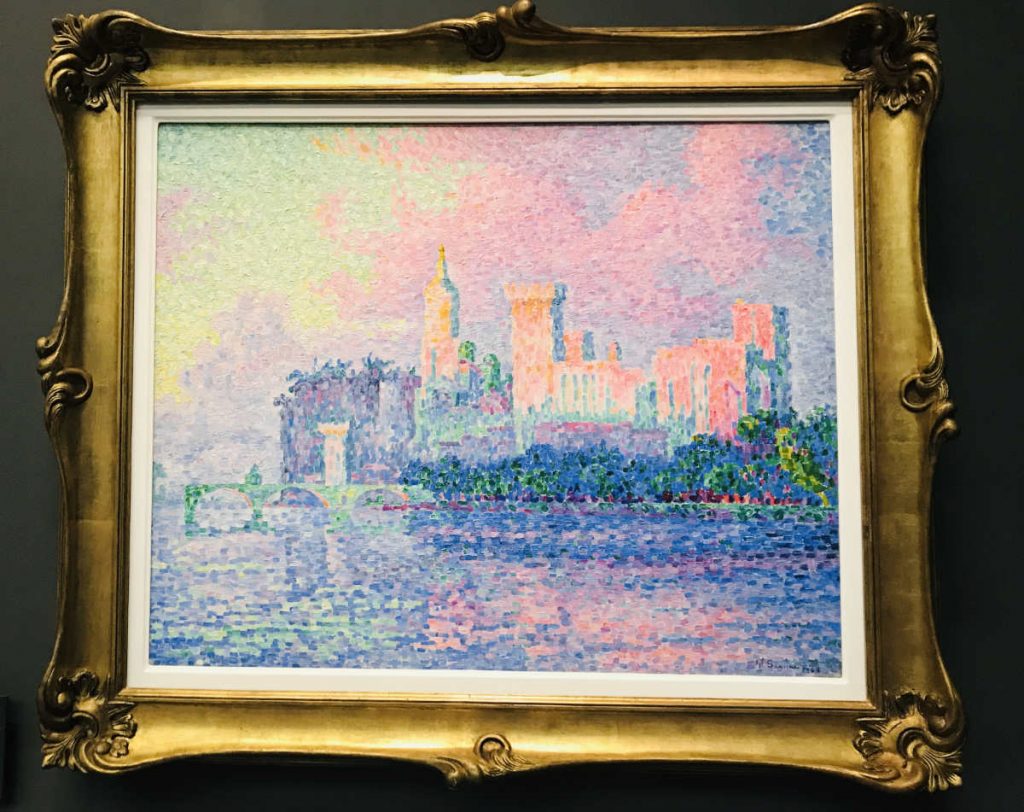
The château is the large castle that was built for the Catholic Popes who moved from Rome to Avignon during what was known as the Avignon Papacy in the 14th century.
The painting was painted in 1909 and was one of several paintings that Signac painted in the same style. Beyond painting, Signac also wrote several books on the theory of art, including From Eugène Delacroix to Neo-Impressionism, which was published in 1899.
13. ‘Poppy Field’ by Claude Monet
Poppy field is a simple painting by the artist Claude Monet, which he painted in 1873, after returning to France from the U.K. The wide open fields are thought to be around Argenteuil where he lived, although today it is a suburb in the outskirts of Paris.
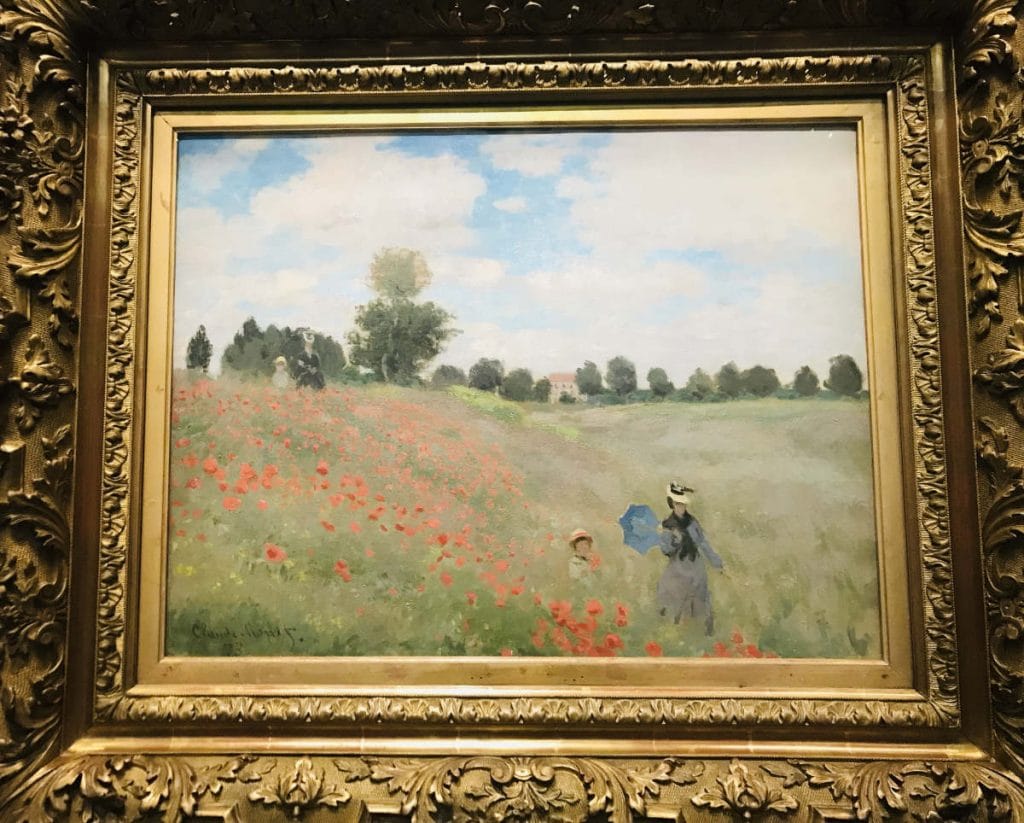
It is a loose and diluted painting, in blobs rather than outlined figures. The woman and child in the painting are believed to be Monet’s wife Camille and son Jean.
Note, Claude Monet was also famous for his waterlilies’ paintings, which you can find at the Musée de l’Orangerie which is directly across the river from Musée d’Orsay. You can get combined skip-the-line tickets for both museums here.
14. ‘Bedroom in Arles’ by Vincent Van Gogh
Another one of Van Gogh’s most famous artworks is the painting of his small bachelor bedroom in Arles, in Provence.
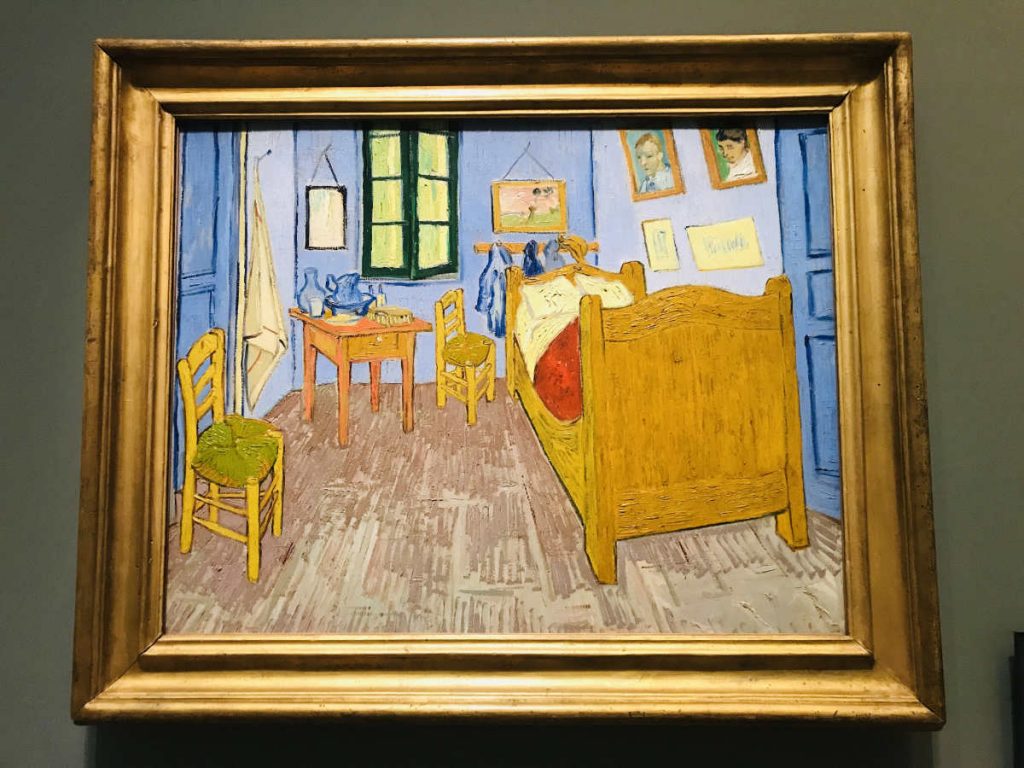
It was painted in 1888 and is based on his room at the Yellow House at Place Lamartine in Arles.
Van Gogh created at least 3 versions of this painting with one version at the Van Gogh Museum in Amsterdam and another one in the Art Institute of Chicago. The one at the Musée d’Orsay is the 3rd one painted.
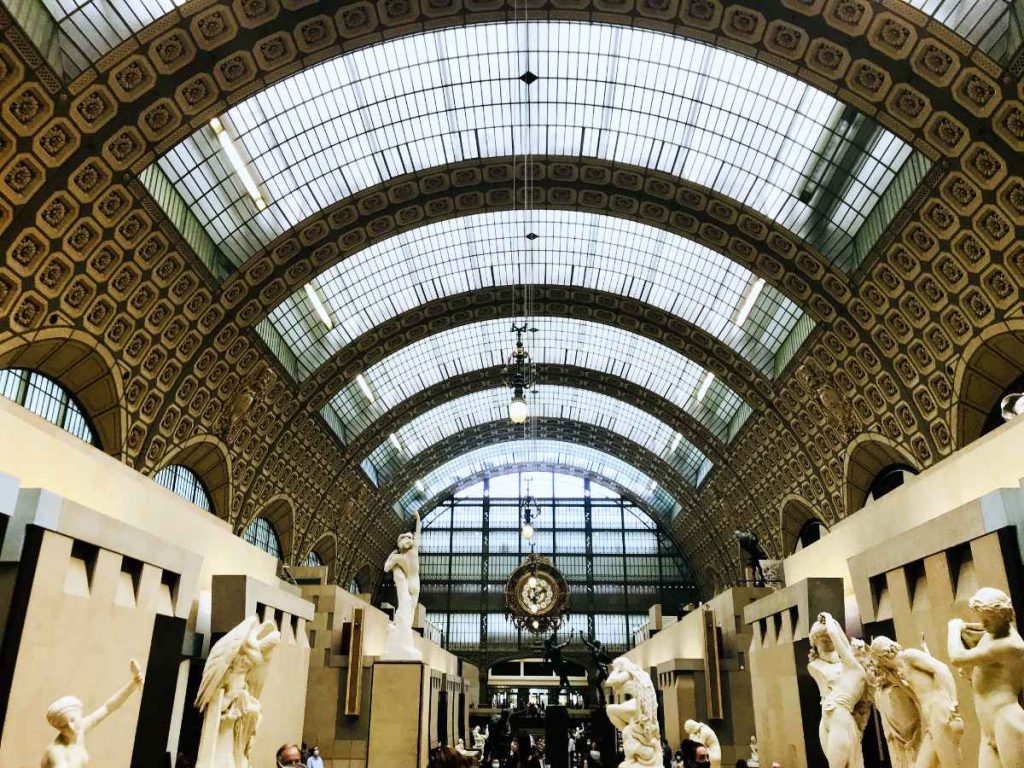
How long do you need at Musée d’Orsay?
You will need at least 3-4 hours in Musée d’Orsay, and that is not counting the line outside to get in. It does get busy in the summer tourist season, so I recommend going in the morning when it opens, rather than the busier afternoons. You can get skip-the-line tickets here.
Is it worth visiting?
Yes! Along with the Louvre Museum, Musée d’Orsay is one of the most popular museums in Paris.
Many people prefer the impressionist era and its wide collection of more recent artworks at Musée d’Orsay, compared to the Louvre which has ancient and renaissance artworks. You can read more about visiting the Louvre here.
Other museums nearby
There are several museums within walking distance of Musée d’Orsay, such as Les Invalides, Musée de l’Orangerie, Musée du Quai Branly, and Musée Rodin which are also well worth a visit if you want to maximize your day.

If you enjoyed that article, you may want to read more about famous French artists as well as my favorite things to do in Paris. A bientôt!
